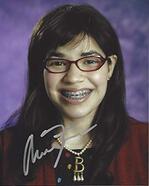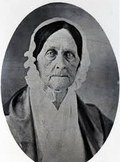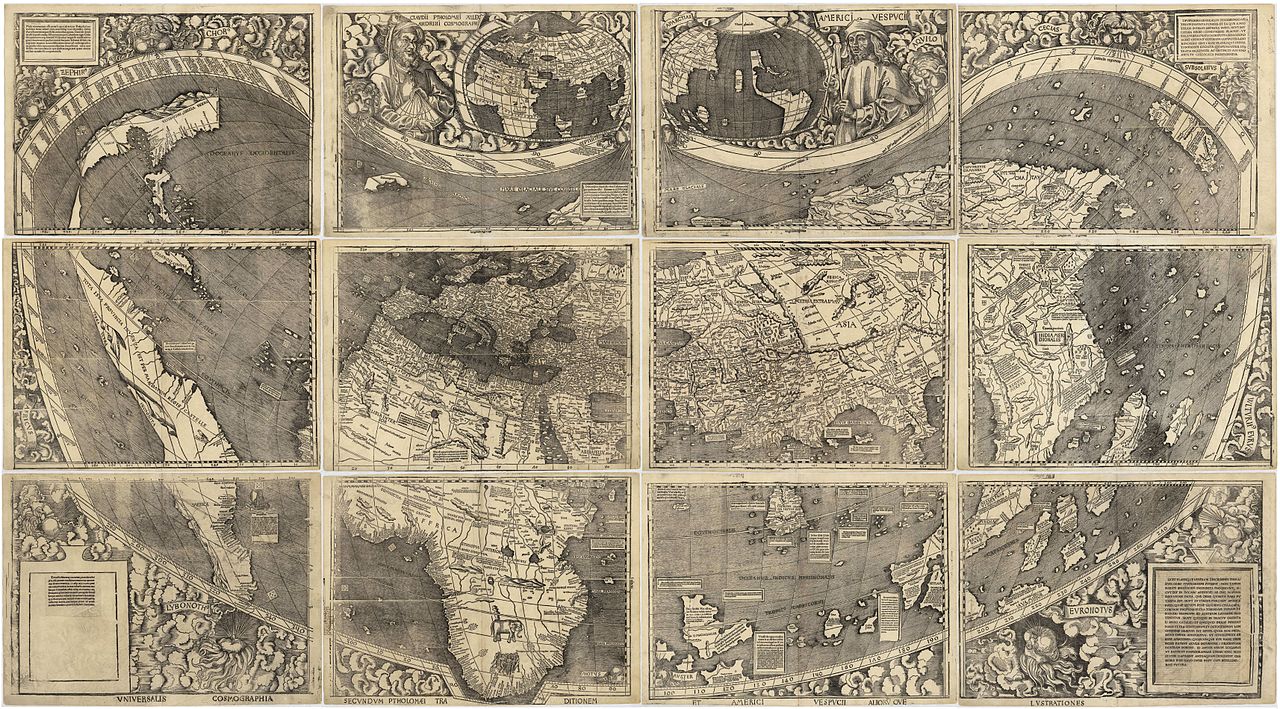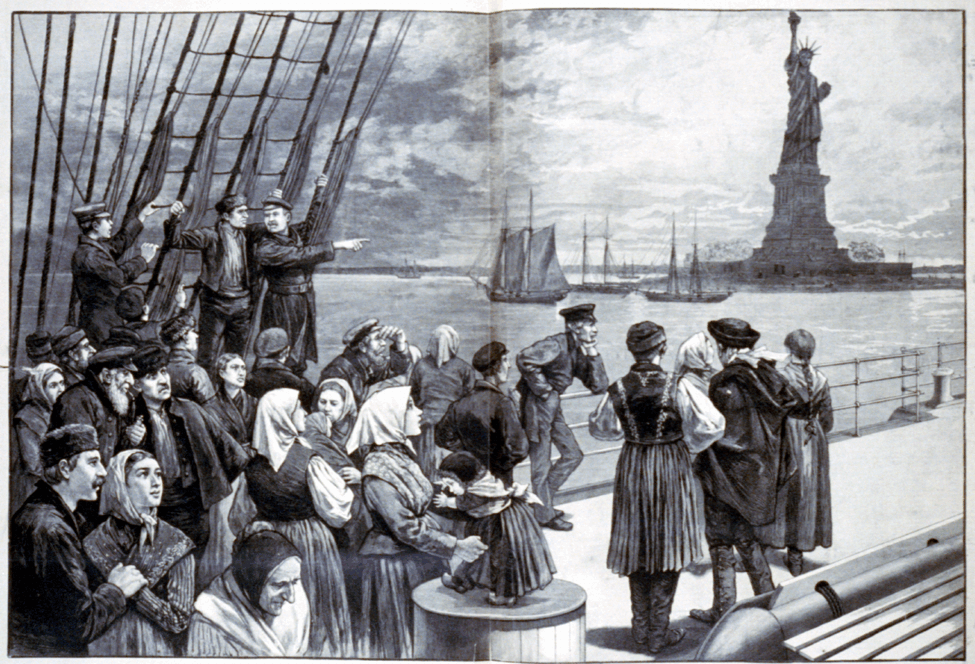 Well, well, well... the 4th of July is here once again—that special day in which we celebrate American Independence Day each, and every, year. Of course, this date is predicated on the magical day in our history when the members of the Continental Congress followed the lead of John Hancock in affixing their signatures to a piece of parchment under a fine essay penned by Virginia’s Thomas Jefferson. The document was destined to be sent to Great Britain’s King George III, son of Frederick, Prince of Wales—namesake of our fine city and county! This event constitutes the birth of the United States of America. Well, we had to win a war first, but it eventually worked out for us in the end. We, the people, went from a collection of separate, provincial colonies under provincial government rule dictated by a royal ruling family and British Parliament located across the Atlantic Ocean on another continent. The founders had successfully assembled a confederation of newly called “states” that were united together at a location in the middle of our own continent. Best of all, they were united as one against their former oppressor. This was quite an accomplishment, but one thing that surely bound us together (at that time, and ever since) was the fact that we have continually given homage to our “home continent” as it’s even included in our former name (USA). Now, I know that Canada was slow to get the memo (see the Statute of Westminster in 1931) but they would eventually sidestep British Parliament’s rule as well. Canadians choose to celebrate their independence on July 1st each year, a date that commemorates the uniting of Canada, Nova Scotia and New Brunswick in the year 1867. Meanwhile, our neighbors to the immediate south, Mexico, celebrate two annual holidays marking “independence” from former European continent invaders--Cinco de Mayo (commemorating the triumph over French and Austrian invaders, and 16 de Septiembre (getting out from under Spain). I guess you could say that the continent of America successfully escaped European dominance over itself.  An American in Italy? Now how did that continent name of America come about in the first place? It was coined by Martin Waldseemüller, a German cartographer. He and Matthias Ringmann are credited with the first recorded usage of the word America. This occurred in 1507, as the gentlemen produced a map entitled “Universalis Cosmographia” in honor of the Italian explorer Americus Vespucius, the Latinized version of the name of Amerigo Vespucci (1454–1512). Vespucci was an Italian explorer who mapped what we today known as South America's east coast, along with the Caribbean Sea in the early 16th century. Through his voyages, made between 1499-1504, Vespucci was able to demonstrate that there existed a separate land mass or “super continent” that eventually came to be referred to as the New World. An article appearing on the Library of Congress’ website adds: The map celebrated Vespucci's understanding that a new continent had been uncovered following Columbus' and subsequent voyages in the late 15th century. An edition of 1,000 copies of the large wood-cut print was reportedly printed and sold, but no other copy is known to have survived. It was the first map, printed or manuscript, to depict clearly a separate Western Hemisphere, with the Pacific as a separate ocean. The map reflected a huge leap forward in knowledge, recognizing the newly found American landmass and forever changing mankind's understanding and perception of the world itself.  So there you have it, our continent is named for an Italian who sailed under both a Spanish and Portuguese flag and eventually received citizenship from Spain—and this, thanks to a pair of German mapmakers. Ironically, the cavalcade of European connections here is also at the core of helping to create the “politically correct” name that has recently been affixed to the continent’s first, indigenous inhabitants—Native Americans. I, of course, say this with a tinge of sarcasm. Europeans at the time of Christopher Columbus' voyage often referred to all of South and East Asia as "India" or "the Indias/Indies", sometimes dividing the area into "Greater India", "Middle India", and "Lesser India.” The oldest surviving terrestrial globe, fashioned by Martin Behaim in 1492 (before Columbus' voyage), labels the entire Asian subcontinent region as "India". When Columbus landed in the Antilles, he referred to the resident peoples he encountered there as "Indians" reflecting his purported belief that he had reached the Indian Ocean. The name stuck and for centuries the native people of the Americas were collectively called "Indians" in various European languages. This misnomer was perpetuated in place naming as the islands of the Caribbean were named the West Indies. The 19th century brought many immigrants to our middle portion of the continent, especially from Europe—the continent that formerly “dogged” our land mass. Of course, immigrants from other continents such came here as well. The term “America” began to take on greater meaning than merely being a fancy name for our mainland. The old explorer’s name now represented an ideal, and would mean different things to different people. This included such things as independence from oppression, a place of peace and prosperity, or the chance to achieve success and fortune. The name America had the overarching connotation of something good, something positive. That being said, it should come as no surprise that the continent name (of America) would also gain popularity as a baby moniker. Today, many may think it an odd an awkward choice for a person’s name, but just compare this with other evocative choices of the post-colonial period Federal period to follow (roughly 1790-1830). During this time, a keen sense of nationalism arose, and government leaders looked to the classical ages of Greece and Rome for inspiration in forging an identity for the new American Republic. Children were given the names of Liberty and Columbia, personifications of the United States of America with the latter owing its origin to that other famed Italian explorer. In addition, a host of virtue-related names were being used such as Charity, Chastity, Hope, Justice, Mercy, Patience, Faith, Grace, and the name “Virtue,” itself.  America Ferrara pictured in her role as Betty Suarez of the "Ugly Betty" television sitcom America Ferrara pictured in her role as Betty Suarez of the "Ugly Betty" television sitcom The name “America” waned in popularity a bit in the Antebellum Era but seems to have made a comeback in 1876 during the time of our country's Centennial celebration. This resurgence continued through the end of the century and beginning of the 20th century to follow. A website entitled www.OhBabyNames.com recounts the history of the name America, one primarily given to females: The name would drop off the charts in 1910 and not re-emerge for another 88 years. “America’s” reappearance took place in 1998 but we’re not sure what prompted the return. We do know later in 2002, the American actress of Honduran descent, America Ferrera, established herself as an up-and-coming talent thanks to her role in the successful indie film “Real Women Have Curves,” followed by the starring role in a television show called “Ugly Betty.” It seems Ferrera has had some positive impact on the usage of her uncommon first name. In more recent years, however, America has fallen substantially further down the charts so her heyday may be behind her (the name, not the actress). In fact, the actress was quoted in Time Magazine regarding how she got her name: “I'm named after my mother. In Latin America, April 14 is Day of the Americas, and my mother was born on April 14, so my grandpa named her America.” From this perspective, America might be a good choice for a U.S. baby born on the 4th of July. Really, it’s hard to find a name more patriotic than America (Liberty comes close). It is also a “place” name much in the same vein as Asia, India or Africa (not to mention London, Paris and Brooklyn). So what’s the controversy with America? Seems that a lot of people who claim to love America feel this is just going too far. Yet the name appears to be more common among immigrants coming to the country from South and Central America; they have a different perspective of and respect for America in general. For them, it’s more of a celebration, which we find lovely. This is not a name for everyone, but there is something special about it that’s hard to deny. So with all that said, I decided to be "an explorer" myself, and took a voyage through our fair cemetery of Mount Olivet in search of "Americas." Here are my findings. America Pritchard Magruder (Dec. 7, 1826-July 15, 1867) I could not find an obituary for America Pritchard Magruder, who died at the age of 40 on July 15, 1867. I was, however, able to find out a little about her. She was the daughter of Benjamin and Elizabeth (Lewis) Pritchard and grew up in Clarksburg, Montgomery County, MD. She married Rufus King Magruder, a prominent farmer of Montgomery County, on October 18th, 1850. The couple would live first in Clarksville, but would relocate to a 230-acre farm just east of Urbana. I was surprised to find that the Magruder farm was directly north and bordering the farm of Miel Burgee on Prices Distillery Road. My last "Story in Stone" centered on Professor Amon Burgee, son of Miel, what are the odds of that?! Apparently the county road here was originally called Magruder Road. Rufus and America had eight children, however only five would reach maturity. Two of these children would receive patriotic names (America and Columbia). Following America P. Magruder's death, Rufus would remarry. His new wife was his former sister-in-law and namesake for daughter Columbia. This was Columbia Pritchard (1828-1903). All three individuals are buried in Mount Olivet's Area Q/Lot118, and their names are etched in stone on the Magruder family monument that stands here. America Florence Magruder (Dec 30, 1860-March 23, 1944) Another woman by the name of America rests in Area Q's Magruder lot. This is America Pritchard Magruder's daughter, America. Her given birth name is America Florence Magruder and it appears she chose to avoid confusion by preferring to go by the name of Florence. She would be raised into adulthood in the Urbana/Ijamsville area by aunt/step-mother Columbia Pritchard Magruder. America Pritchard Williams (1889-April 9, 1899) On the opposite, east face of the above shown Magruder family monument, one will find the names of America Pritchard Williams and brother H. Magruder Williams. These were the children of Charles A. D. Williams (1859-1938) and wife Columbia Matilda (Magruder) Williams (1828-1903). Mrs. Williams was a daughter of the fore-mentioned America Pritchard Magruder who is buried in the same lot. As you can see by birth and death dates, both of Columbia's children died young. America Eugenia (Browning) Nicodemus (March 23, 1845-Dec 20, 1919) First off, I was ecstatic that this America was not related to the Magruder family, as it was getting very tough to keep a handle on all those Americas and Columbias. America Eugenia Browning Nicodemus was born in Frederick to blacksmith, Jonathan Browning and wife Maryann Clary. The family lived in the vicinity of N. Bentz and W. Third streets in downtown Frederick. America would leave her parents upon marriage in 1863. America's husband, William H. Nicodemus (1838-1914), was a pretty successful businessman who listed his occupation as shirt-maker in the 1870 US census. America is listed in this record as "Mary." Children were born to the couple, a girl, Helen, in 1864, and a son, A. Hammond in 1869. (I ventured whether the "A" stood for "you know what," but wasn't able to find out.) Both would die in childhood before spring of 1880. A third son, however, was born in 1877 and would reach adulthood, Robert C. Nicodemus. He would become a doctor and moved to the nation's capital. By 1880, the family lived at 514 N. Market St. and William worked as a bank secretary. America is listed as A. Eugenia, so the passing fancy of Mary must have worn off, but upon closer inspection "Mary" is a good nickname for a woman named America. Mr. Nicodemus accumulated great wealth and real estate over his professional career. He died in 1914 and Mrs. Nicodemus appears to have been well taking care of. At this time, the couple resided at 119 W. Third Street. However, upon her death five years later in 1919, the local newspapers are filled with articles about a highly contested case involving Mrs. Nicodemus' fortune. Apparently a grandson and his wife had taken the invalid widow into their home in Washington DC. and left these individuals the bulk of her estate. Questions were raised by other family members over the legitimacy of this claim and whether or not America Nicodemus was of sound mind when her grandson had her rework her will. The case would not be settled until 1922. America Nicodemus' gravestone in Area H (Lot362) sits along the main drive, opposite Confederate Row. It has the following quote written at the bottom: "She Hath Done What She Could." America Susanna Rhoades Smith (March 5, 1832 –Aug 6, 1880) America S. Rhoades was born in Jefferson, Maryland on March 5th, 1832 to Henry and Elizabeth Susannah (Titlow) Rhoades. She would marry Hiram Joshua Smith of Jefferson, and the couple had at least four known children. Sadly, America would die of consumption at the age of 48. She left a widowed husband and four children. Our cemetery records state that she was originally buried in Jefferson Methodist Episcopal Cemetery but later re-interred to Mount Olivet's Area L/Lot71 on December 1st, 1906.  "Babs" Fritchie is in good company! "Babs" Fritchie is in good company! So on this particular Independence Day, I humbly dedicate this blog to five, former “Miss Americas” of Frederick County who are buried here within Mount Olivet. I’m sure each proudly wore her moniker, even though they could have also gone by nicknames such as Amie or Erica as well. Regardless, I hope that each inspired a patriotic spirit among family and friends, especially on the many “4th of Julys” that came and went over their lifetime on earth, and more particularly, the great namesake continent that shares their name, not to mention the amazing country we all should celebrate on this sacred day—the United States of America.
1 Comment
Jeanie Virts LaGrave
7/5/2019 07:03:40 am
Love this article. I am an amateur genealogist and love reading stores of local people and families. My great-grandmother's name was Minnie America Thompson (1867- 1947) who married Wallace Virts and both are buried at St. Paul's Cemetery, Point of Rocks. Thank you.
Reply
Leave a Reply. |
STORIES
|
Archives
July 2024
June 2024
May 2024
April 2024
March 2024
February 2024
January 2024
December 2023
November 2023
September 2023
August 2023
July 2023
June 2023
May 2023
April 2023
March 2023
February 2023
January 2023
December 2022
November 2022
October 2022
September 2022
August 2022
July 2022
June 2022
May 2022
April 2022
March 2022
February 2022
January 2022
December 2021
November 2021
October 2021
September 2021
August 2021
July 2021
June 2021
May 2021
April 2021
March 2021
February 2021
January 2021
December 2020
November 2020
October 2020
September 2020
August 2020
July 2020
June 2020
May 2020
April 2020
March 2020
February 2020
January 2020
December 2019
November 2019
October 2019
September 2019
August 2019
July 2019
June 2019
May 2019
April 2019
March 2019
February 2019
January 2019
December 2018
November 2018
October 2018
September 2018
August 2018
July 2018
June 2018
May 2018
April 2018
March 2018
February 2018
January 2018
December 2017
November 2017
October 2017
September 2017
August 2017
July 2017
June 2017
May 2017
April 2017
March 2017
February 2017
January 2017
December 2016
November 2016
































 RSS Feed
RSS Feed